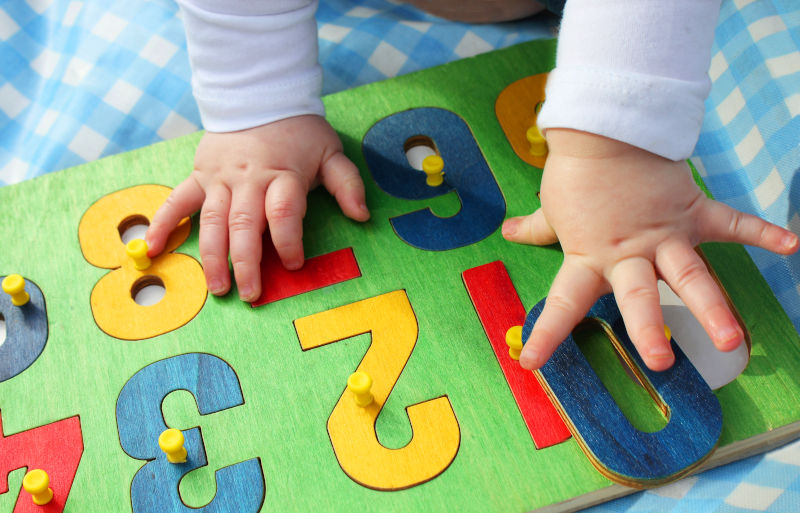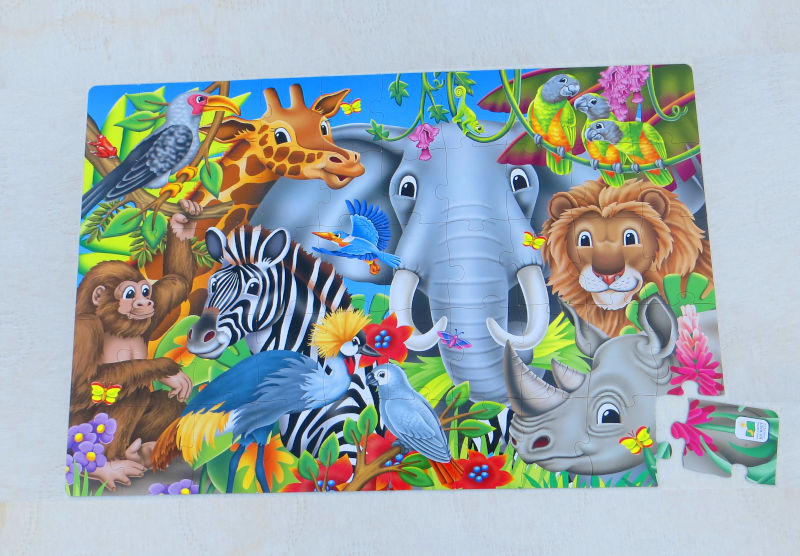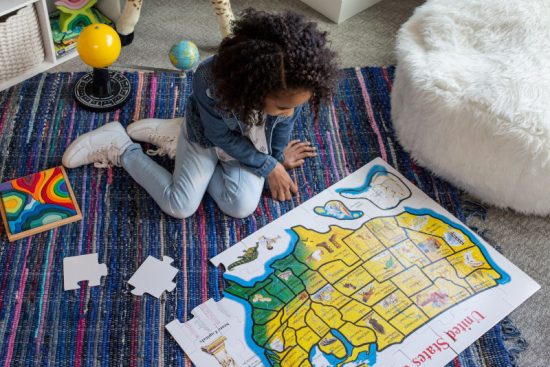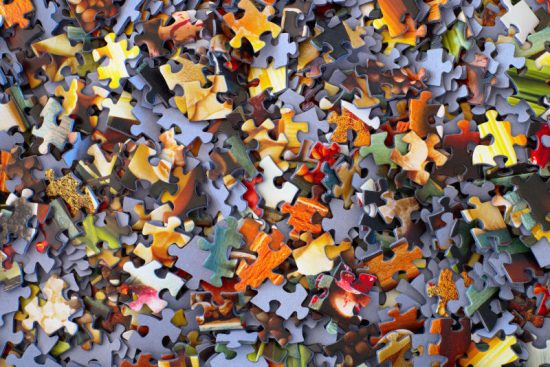This page may contain affiliate links. If you purchase something through one of the links, we may receive a commission at no extra charge to you. Still, we would include only products we actually trust and believe will be helpful for you.
When you hear the word “puzzle”, your mind probably goes to the classic jigsaw puzzles that have interlocking pieces. But they’re not the only game in town as there are also inset puzzles, which include pieces that fit inside holes on a wooden tray.
Under those two puzzle groups, there are actually 6 additional types which are as follows:
- Knob, chunky and peg puzzles (insets)
- Frame, floor and 3D puzzles (jisgaws)
We want here to shed the light on all those puzzles that you can get for your child. As a parent or grandparent, this guide will hopefully inform you about the various puzzle types available on the market and how they’re different.
The puzzles are listed below from the easiest to the most difficult.

Please note this article is exclusively about the puzzles that require children to insert the pieces into the correct spots in order to assemble the image or shape (i.e. mechanical puzzles). There are obviously other kinds of puzzles which we won’t include like crosswords, riddles, picture puzzles, and math problems.
1. Knob Puzzles
Knobbed puzzles are hands down the simplest kind of puzzle available out there for children. Just like all inset puzzles, the pieces are typically non-connecting and fit on a board that’s made from wood.

Each puzzle piece has a big knob that makes it easy to hold and manipulate (hence, the name). That’s the main reason why this type of inset puzzles is perfect for babies and younger toddlers who are starting to develop their fine motor skills.
Knob puzzles typically cover simple images like basic vehicles, fruits, and geometric shapes. They also feature relatively few pieces which are usually in the range of 3-8.
2. Chunky Puzzles
Chunky puzzles don’t include any kind of knobs. Instead, they feature bulky pieces that are thicker than the tray to make them easy to be manipulated by little ones. The pieces are typically non-connecting but not always.

Those puzzles require young kids to utilize their whole hand (not just the fingers) to pick up and move the pieces. They’re great for toddlers to strengthen the muscles of their hands.
This kind of inset puzzle also include a few pieces which are usually between 4-12 pieces. Many of the chunky puzzles available on the market are about vehicles and animals, which helps little kids to learn object names and discern more detailed shapes.
3. Peg Puzzles
Pegged puzzles are quite similar to knobbed puzzles except the pieces have a smaller knob (peg). They’re considered the most difficult inset puzzles out of the three.

The thin knob helps to further improve the fine motor skills of little ones. The ideal children groups for this puzzle are older toddlers and preschoolers.
A pegged puzzle typically includes around 8-26 pieces. In addition to the animals theme, this puzzle usually covers alphabets and numbers which helps children with language and math skills before school.
4. Frame Puzzles
Frame puzzles are basically the beginner level for jigsaw puzzles. As the name implies, the interlocking pieces go inside a frame and they can be made from cardboard or wood.

The frame helps kids in knowing where to put the puzzle pieces especially the ones at the borders. These puzzles are suitable for preschoolers and kindergartners.
Frame puzzles can have anywhere between 9-60 pieces. They cover a variety of topics especially vehicles and animals including more sophisticated images.
5. Floor Puzzles
Floor puzzles are what usually comes to mind when you think about a jigsaw puzzle. They are made to be assembled directly on the floor (without a frame).
These puzzles are one of the best when it comes to promoting problem solving skills in kids. They are appropriate for any child from preschool age and beyond.

Floor puzzles usually contain between 24 and several hundred pieces. There is no limit to the topics covered by these classic puzzles including the jungle, world map, planets, dinosaurs and more. Additionally, the puzzle material is typically cardboard or wood, though sometimes foam.
It’s worth mentioning there are some puzzles that have less than 20 pieces. Those are not rectangular and take the specific shape that will be assembled like a butterfly or t-Rex.
6. 3D Puzzles
3D jigsaw puzzles involve assembling a three-dimensional shape instead of a flat image. These are the most difficult type of puzzles for kids since they’re not straight and require more time to complete. And the pieces are always made from plastic.

Those puzzles are mainly targeted to children who are at least 7 years of age including older elementary schoolers. They help to further improve the kids’ ability to think and solve problems.
A children 3D puzzle usually contains more than 100 pieces and can be up to a thousand. Some common 3D shapes used in kids puzzles are buildings, ships and the globe.
Bottom Line on Types of Puzzles
As mentioned, there are primarily 6 different kinds of kids puzzles that fall under either the jigsaw or inset group.
Inset puzzles are easier to assemble and typically targeted to younger children. Jigsaws are more classic and made for kids beyond the toddler years (not to mention for adults also).
Hopefully this guide has assisted you to understand the types of puzzles that are available out there for little ones. By the way, we highly recommend you check out the in-depth guide we wrote on how to choose a children puzzle, if you haven’t already.
Below is a table that summarizes the puzzle types mentioned in this article.
By the way, we have developed a calculator for suitable puzzle size. This online tool will allow you to effortlessly know the right child age (or number of pieces) for a puzzle. Be sure to check it out.




